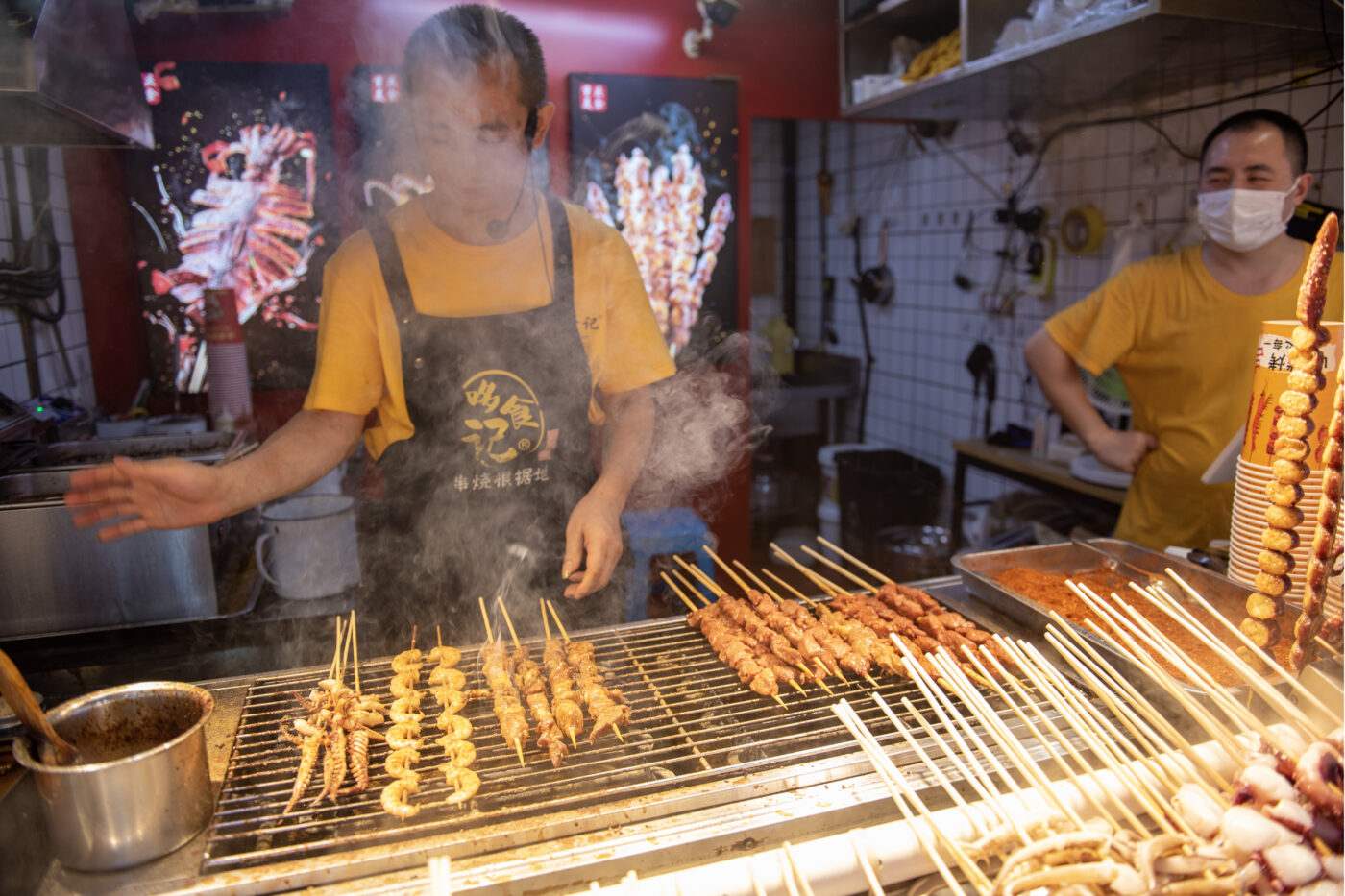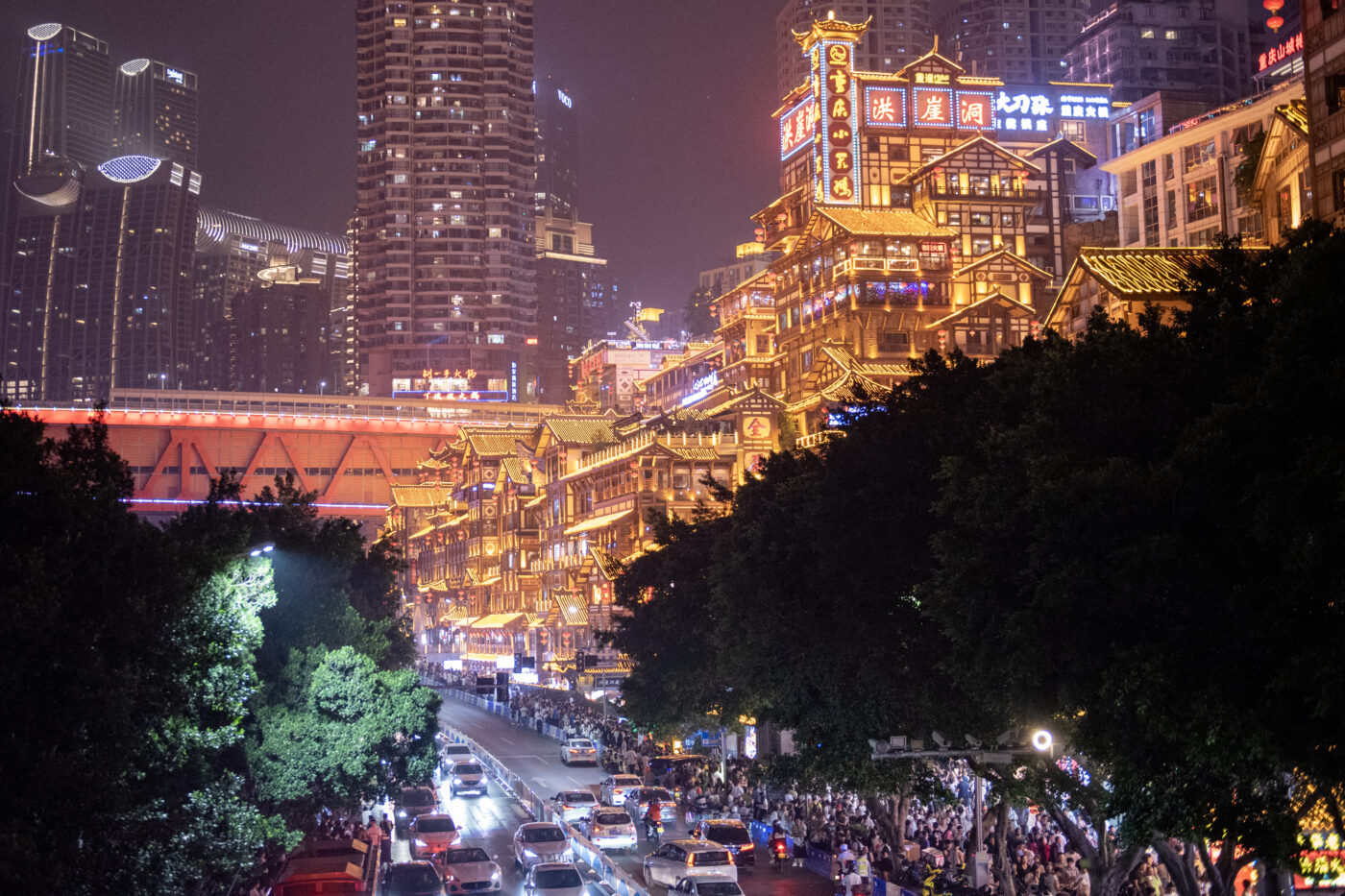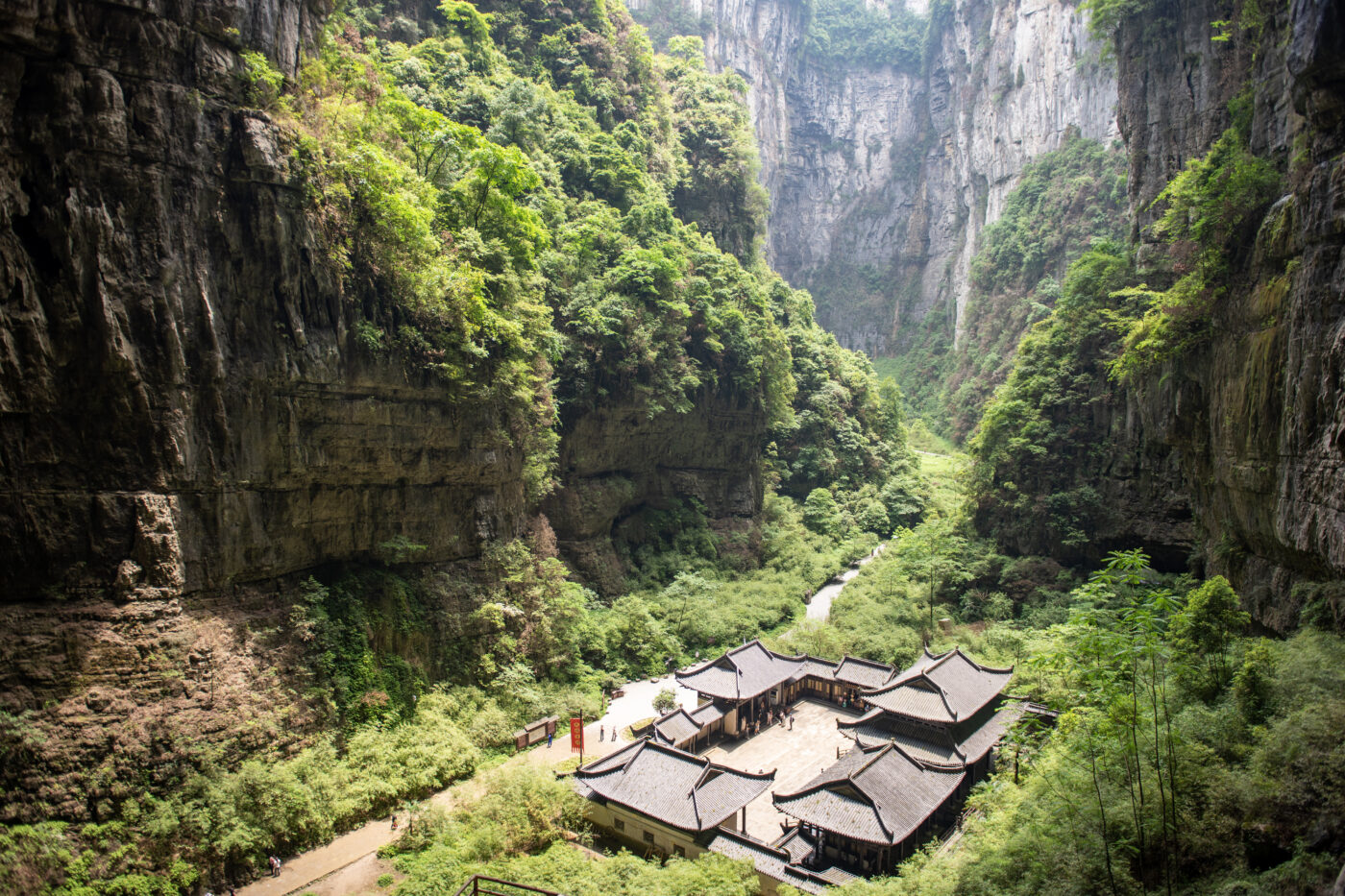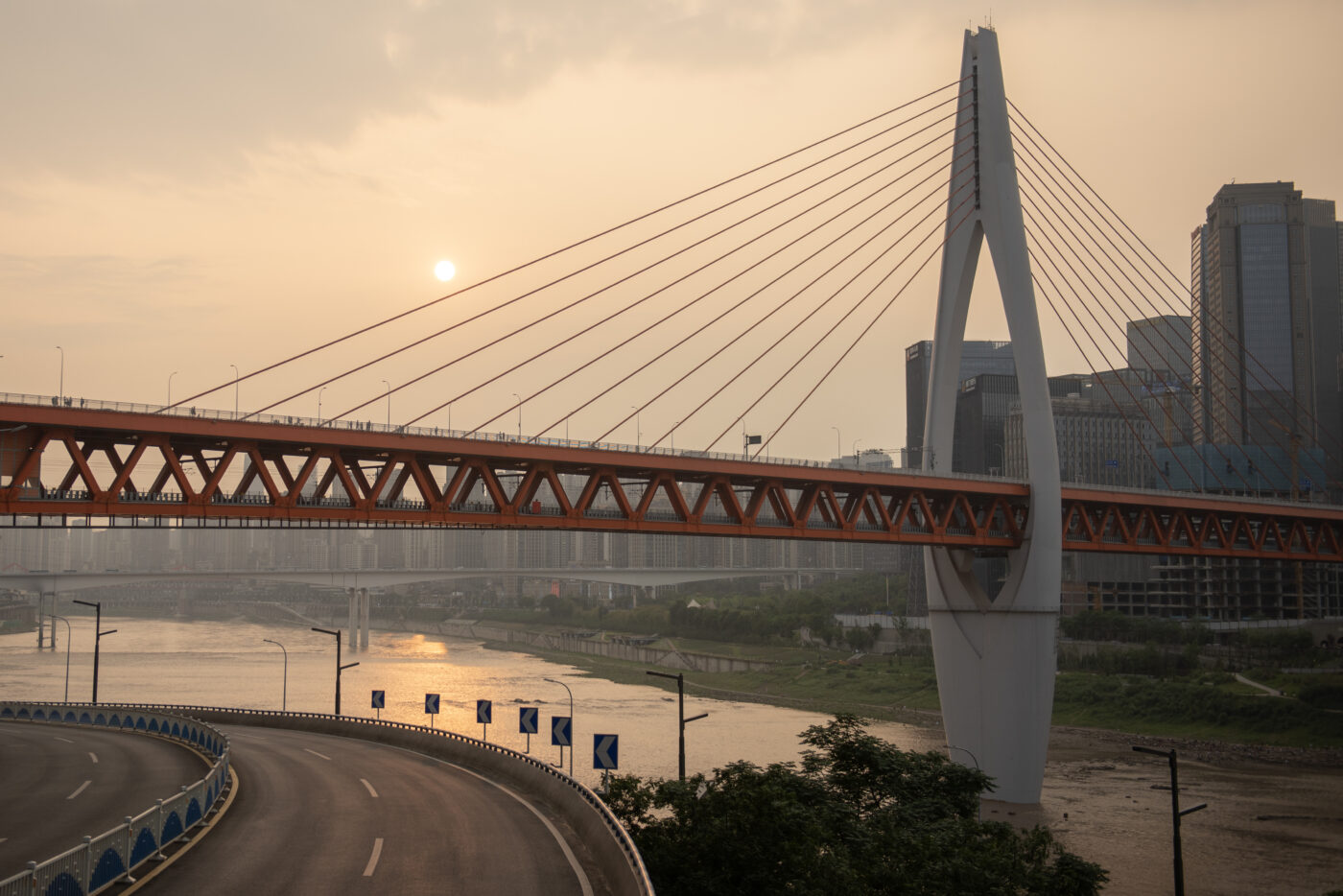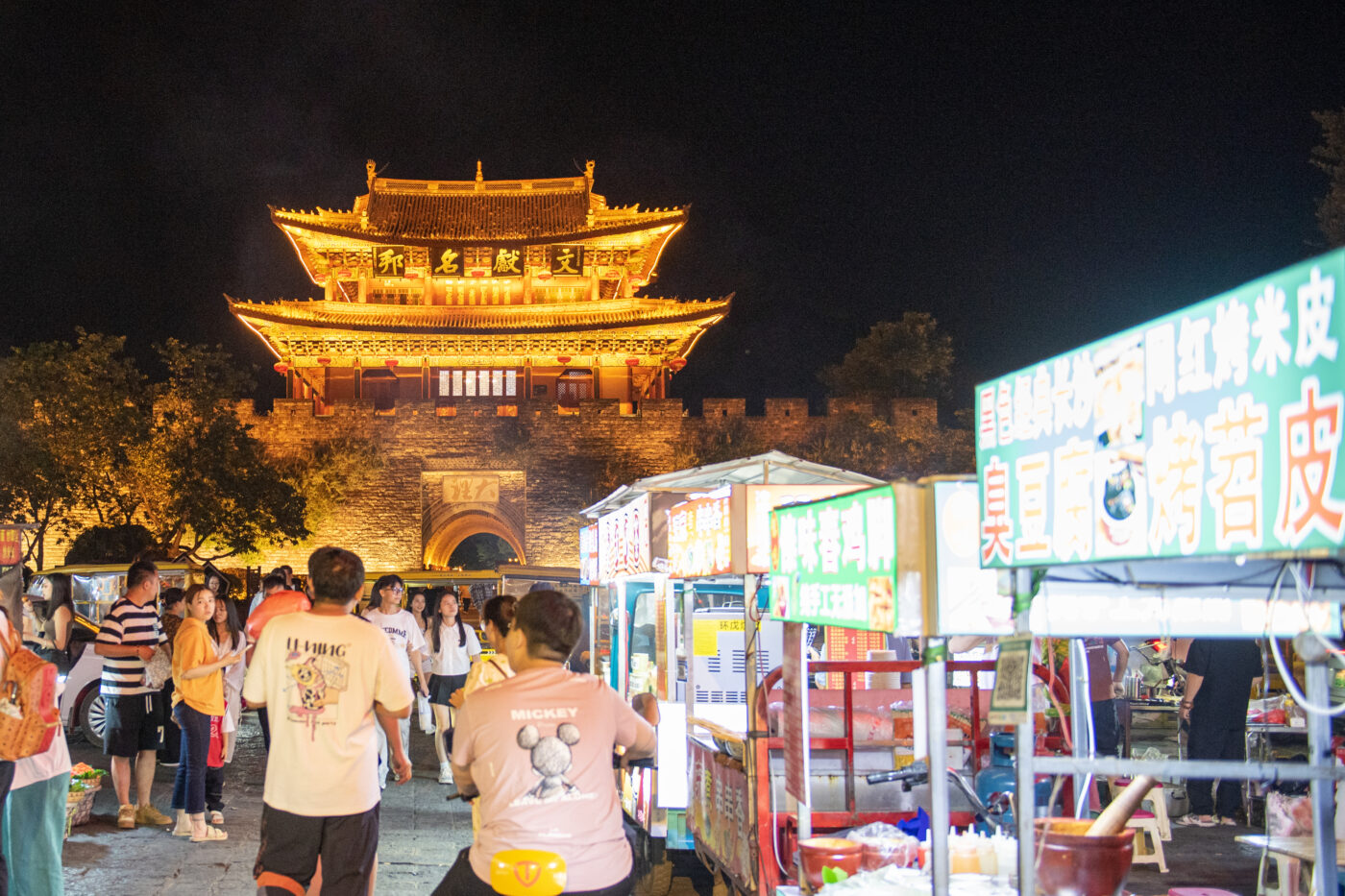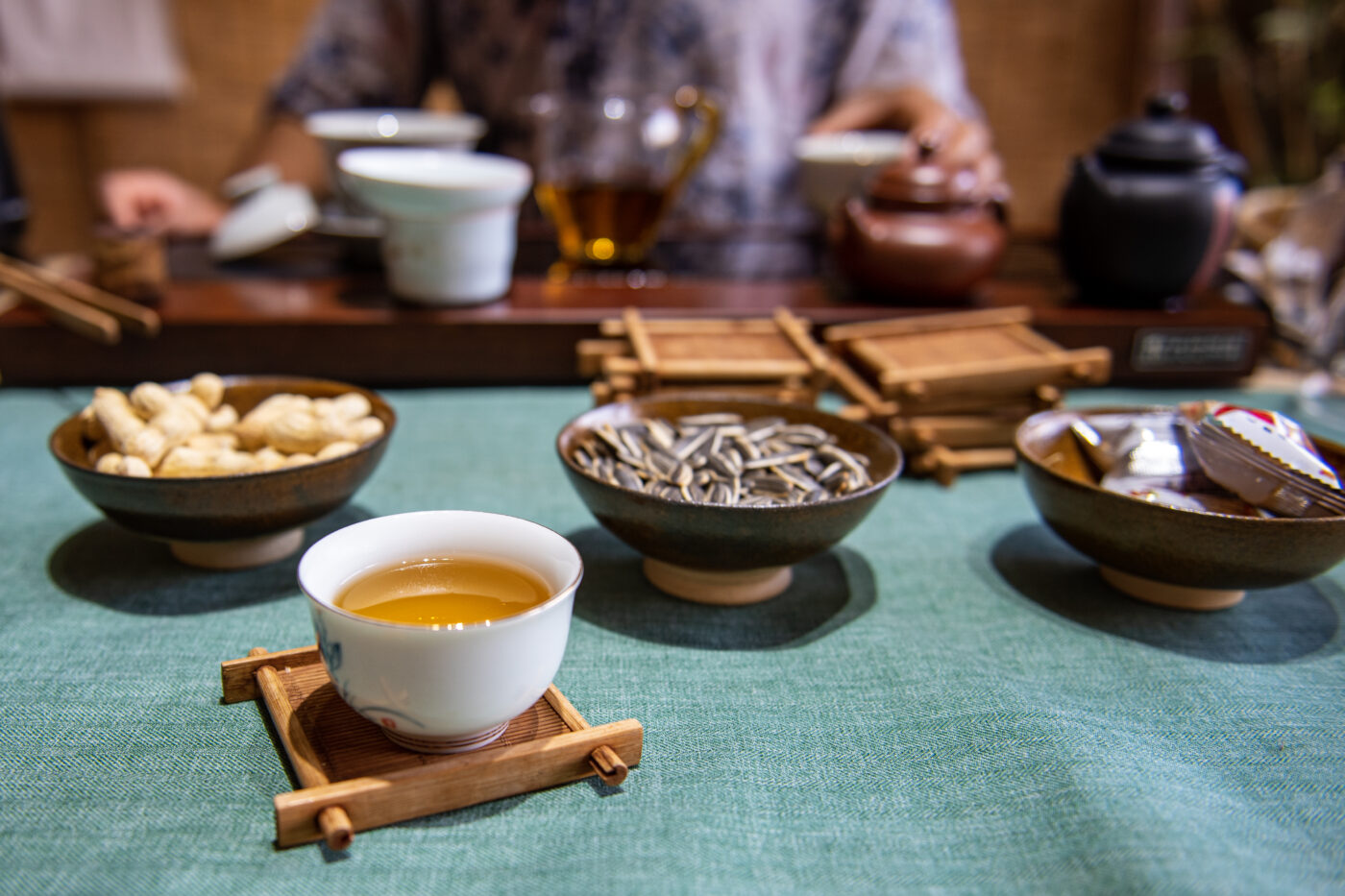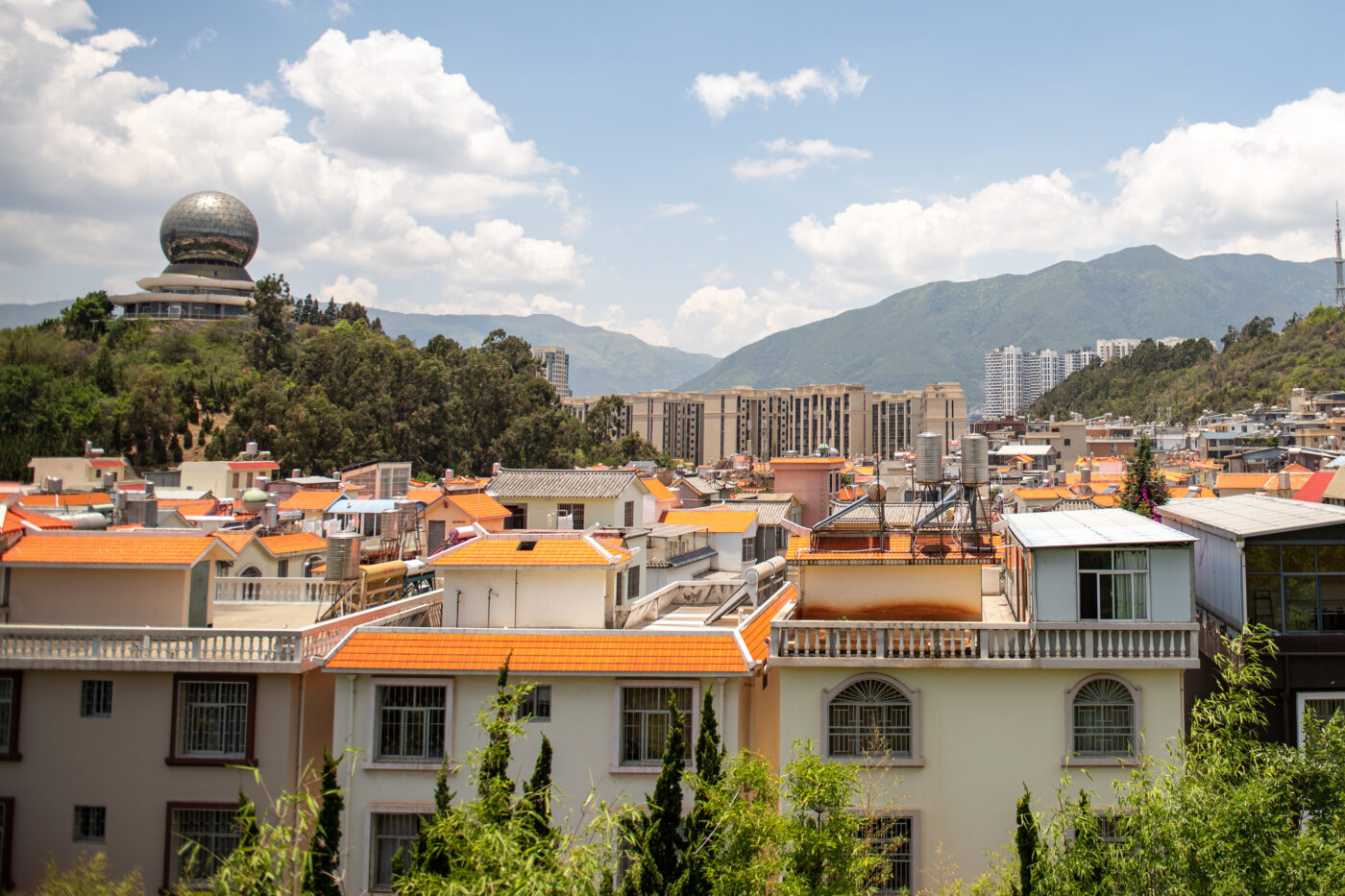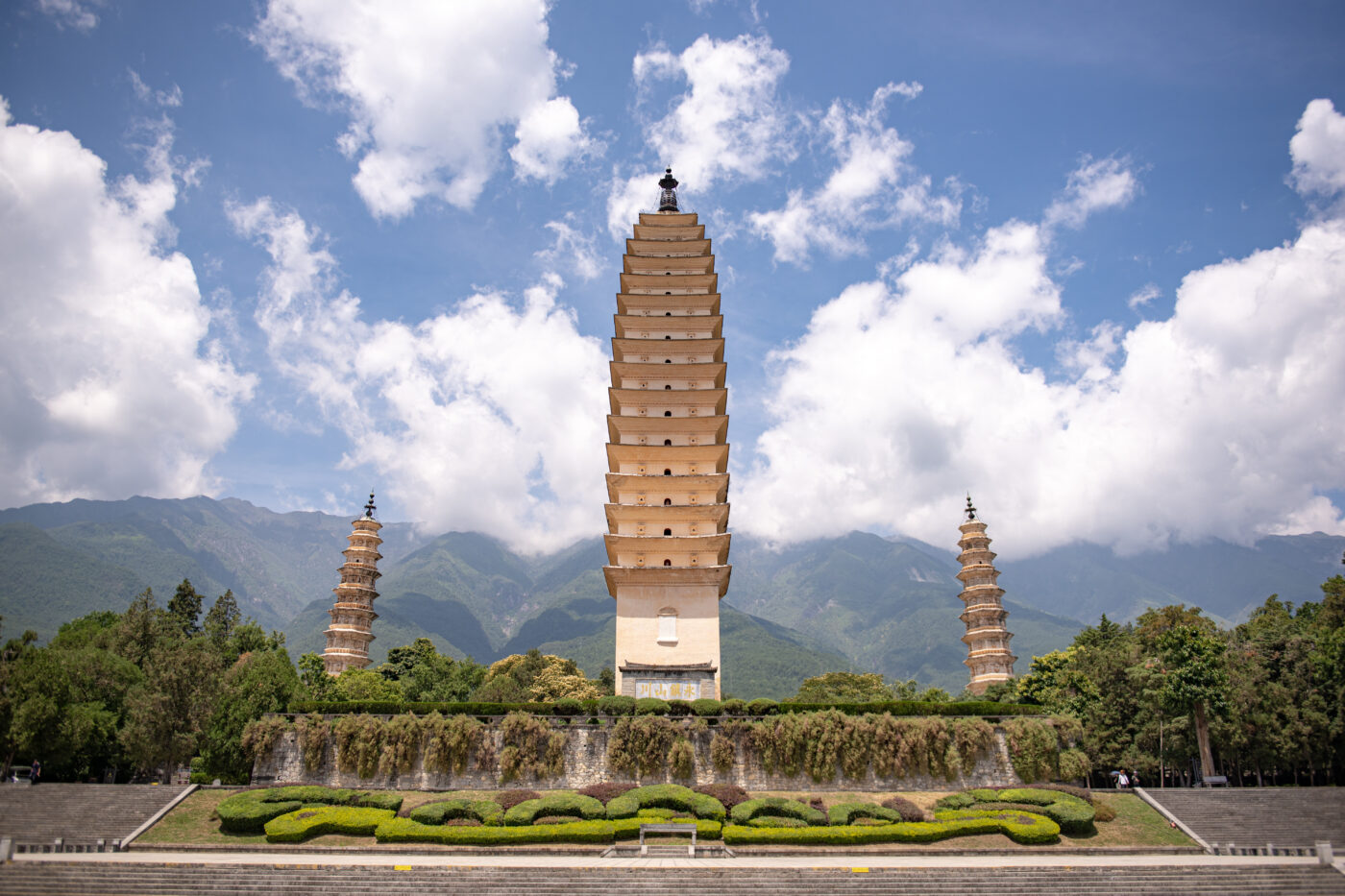For my last day in Wuhan, I visited Yellow Crane Tower. This structure has existed in some form or another since AD 223. From the top of the building, you can get an expansive view of Wuhan’s downtown cityscape and of the Yangtze River.
I arrived in Chongqing! This is the largest inland city in China (urban population of 18 million vs. NYC’s urban population of 8 million, both circa 2021, for comparison) and its cityscape is defined by its mountains, bridges, and rivers. I learned of Chongqing through a Chinese rap video. It made the city look so amazing, I had to visit!
I went on a river cruise along the Jialing River, which took us around parts of Chongqing. I managed to capture these stunning views of the city from the river. I didn’t expect to enjoy the tour as much as I did, but I did, and the photos turned out beautifully.
I visited Ciqikou, an ancient town that was once known for its thriving porcelain production. There’s very little, if any, porcelain manufactured here now. Instead, these storefronts have been mostly converted into small shops and restaurants.
I visited Wulong Karst, a region known for its beauty and prominent karst landscape. Three Natural Bridges, one of several protected areas, was made internationally famous by Transformers. These natural bridges are the largest in Asia.
For my last day in Chongqing, I toured People’s Square, the Three Gorges Museum, and the Great Hall of the People. I was hoping for more from the Three Gorges Museum, but it focused less on the Three Gorges and more on general Chinese history. However, considering it from that perspective, it wasn’t bad.
I made it to Dali, located in Yunnan province. Yunnan, a landlocked province in southwest China, borders Vietnam, Laos, and Myanmar. Due to its strategic location, it’s one of the most ethnically diverse provinces in China. It’s historically significant as it served as the capital of the Dali Kingdom, which encompassed present-day Yunnan as well as parts of Laos and Myanmar. After the kingdom was overthrown, its people, primarily the Bai people, were ruled by the Mongol-led Yuan dynasty, followed by the Ming dynasty.
Yunnan is renowned, along with Fujian, as one of the two provinces celebrated for their teas throughout China. Yesterday, I had the pleasure of sampling teas at a popular tea house, guided by my host. She and her extended family have been immersed in the tea trade and tea house culture for generations.
I visited Xiaguan, Dali’s modern city center, where I explored Erhai Park and Erhai Lake. The park is massive, featuring a sizable amusement park within its grounds, while the lake is the second-largest highland lake in China. After spending several hours exploring these areas, I was ready to head back. However, I found myself short on bus fare. Unlike in the US, Chinese buses don’t offer free transfers (especially if you’re paying cash), and I could only afford one leg of the trip. This is what poverty feels like!
I visited the Three Pagodas, located at the foot of the Cangshan Mountains. The original and largest pagoda was built sometime in the 9th century, with its two smaller siblings added 100 years later for auspicious reasons.


